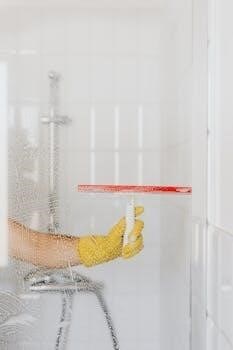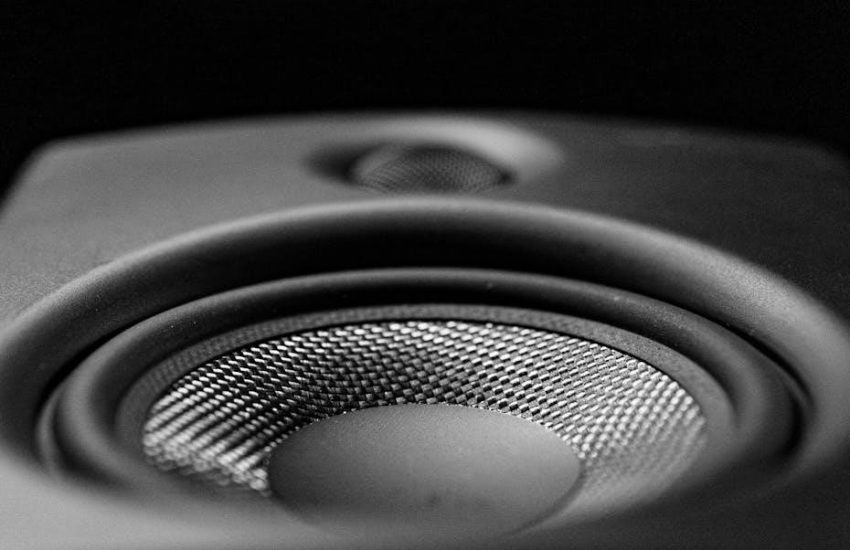sensaphone 800 manual
Sensaphone 800 Manual⁚ A Comprehensive Guide
Welcome to the comprehensive guide for the Sensaphone 800 remote monitoring system. This manual offers detailed instructions and information to help you effectively use its features for environmental and security monitoring. Perfect for homes and businesses, it ensures you’re always informed.

The Sensaphone 800 is a versatile remote monitoring system designed to provide timely notifications about critical conditions in your home or business. Functioning as an alarm notification system, it ensures you’re promptly alerted to potential problems. This system is particularly useful for monitoring remote locations, such as vacation homes or commercial properties, providing peace of mind regardless of your physical location;
With its ability to accept up to eight external sensors, the Sensaphone 800 can monitor a wide range of environmental factors. These sensors can include temperature probes, water detectors, humidity sensors, and more, allowing you to customize the system to meet your specific monitoring needs. The system can also be programmed to alert up to eight different people via custom voice phone calls, ensuring that the right individuals are notified in case of an alarm.
The Sensaphone 800 builds upon previous models by adding enhanced capabilities, such as real voice capability, which allows you to record voice labels for easy identification of the unit and each input. Additionally, it features an output relay that can be used to control external devices like thermostats, sirens, or strobes, either manually or automatically based on alarm conditions. This makes the Sensaphone 800 a powerful tool for comprehensive remote monitoring and control.
Key Features and Benefits
The Sensaphone 800 boasts several key features that make it an invaluable asset for remote monitoring. One of its primary benefits is its ability to monitor up to eight external sensors, allowing users to track a variety of conditions such as temperature, water leaks, humidity levels, and more. This comprehensive monitoring capability ensures that potential problems are detected early, minimizing potential damage and losses.
Another significant feature is the custom voice phone call alerts. The Sensaphone 800 can be programmed to call up to eight different phone numbers, delivering custom voice messages that clearly identify the alarm condition. This real voice capability allows for quick and accurate assessment of the situation, enabling prompt response and corrective action.
The inclusion of an output relay provides enhanced control over connected devices. This relay can be configured to automatically activate or deactivate devices like thermostats, sirens, or strobes based on alarm conditions, or it can be controlled manually for remote operation. This feature adds an extra layer of protection and control, making the Sensaphone 800 a versatile and effective remote monitoring solution. Furthermore, its ease of use and affordable price point make it an accessible option for both residential and commercial applications.
Setting Up Your Sensaphone 800
Setting up your Sensaphone 800 involves several key steps to ensure proper functionality and reliable monitoring. First, unpack the Sensaphone 800 unit and inspect all components for any signs of damage during shipping. Ensure you have the main unit, power adapter, and any purchased sensors or accessories. Place the unit in a location where it has access to a telephone line, as this is essential for its alarm notification capabilities.
Next, connect the power adapter to the Sensaphone 800 and plug it into a power outlet. The unit should power on, and you can begin the initial configuration process. This typically involves setting the date and time, which can usually be done through a series of keypad commands or voice prompts, depending on the model’s interface.
After setting the date and time, connect the Sensaphone 800 to an active telephone line using a standard RJ11 telephone cable. This connection allows the unit to dial out and deliver alarm notifications. Once the basic connections are established, you can proceed to program the phone numbers for alarm notifications and configure the input settings for your connected sensors. Refer to the user manual for specific instructions on programming these settings, as the process may vary slightly depending on the firmware version of your Sensaphone 800.
Connecting External Sensors
Connecting external sensors to your Sensaphone 800 is crucial for comprehensive monitoring of your property. The Sensaphone 800 is designed to accept up to eight external sensors, allowing you to monitor various conditions such as temperature, water leaks, humidity, and more. Before connecting any sensors, ensure that they are compatible with the Sensaphone 800 and that you have the necessary wiring and connectors.
Each sensor input on the Sensaphone 800 is labeled, and it’s important to connect the sensors to the correct inputs to ensure accurate monitoring. Refer to the Sensaphone 800 user manual for a detailed diagram of the input terminals and their corresponding functions. Typically, sensors are connected using simple wire connections, and you may need to strip the ends of the wires to ensure a secure connection to the terminals.
Once the sensors are physically connected, you’ll need to configure the Sensaphone 800 to recognize and interpret the signals from each sensor. This involves programming the input settings, such as defining the normal and alarm states for each sensor. For example, you may set a temperature sensor to trigger an alarm if the temperature falls below a certain threshold. The user manual provides step-by-step instructions on how to program these input settings, ensuring that your Sensaphone 800 accurately monitors and responds to the conditions detected by your external sensors.

Programming Phone Numbers and Custom Voice Alerts
Programming phone numbers and custom voice alerts is a key feature of the Sensaphone 800, allowing it to notify you and others of alarm conditions. The Sensaphone 800 can store up to eight phone numbers, ensuring multiple contacts can be alerted in case of an emergency. To program the phone numbers, access the programming mode on the Sensaphone 800, typically through a keypad or menu system.
Follow the instructions in the user manual to enter each phone number, ensuring accuracy to avoid missed notifications. Once the phone numbers are stored, you can assign custom voice alerts to each input or sensor. This allows the Sensaphone 800 to deliver specific messages when an alarm is triggered, such as “Temperature alarm in the server room” or “Water leak detected in the basement.”
To record custom voice alerts, use the Sensaphone 800’s built-in recording feature. Speak clearly and concisely, providing all necessary information in the alert message. The user manual provides detailed instructions on how to record and assign voice alerts to each input. By programming phone numbers and custom voice alerts, you can ensure that the right people are notified with the right information when an alarm condition occurs, enabling a prompt and effective response to protect your property.

Understanding Input and Output Relays
Understanding input and output relays is crucial for maximizing the Sensaphone 800’s capabilities. Input relays allow the Sensaphone 800 to receive signals from external sensors, such as temperature sensors, water detectors, and door/window contacts. These inputs trigger alarms based on pre-set conditions. The Sensaphone 800 model accepts up to eight external sensors.
Output relays, on the other hand, enable the Sensaphone 800 to control external devices. For example, when an alarm condition is detected, the output relay can activate a siren, strobe light, or even a thermostat to regulate temperature. This functionality is invaluable for creating automated responses to various environmental or security threats.
The Sensaphone 800 offers both normally open (NO) and normally closed (NC) relay outputs, providing flexibility in connecting to different types of devices. A NO relay completes the circuit when activated, while an NC relay breaks the circuit when activated. The Sensaphone 800 can switch a device such as a thermostat, siren, or strobe, either manually or automatically based on the input triggers you configure. By understanding how input and output relays work, you can tailor the Sensaphone 800 to meet specific needs and create a comprehensive monitoring and control system.
Remote Access and Control
The Sensaphone 800 offers convenient remote access and control, allowing you to monitor and manage your property from anywhere. By calling into the Sensaphone 800’s phone line, you can check the status of all connected sensors and receive real-time updates on any alarm conditions. This feature is particularly useful for vacation homes or businesses where constant on-site monitoring is not feasible.
Remote access also enables you to control output relays, allowing you to remotely activate or deactivate connected devices. For instance, you can turn on a heater in a vacation home before arriving or silence an alarm after verifying its cause. The Sensaphone 800’s remote control capabilities provide peace of mind and enable you to respond quickly to changing conditions.

To ensure secure remote access, the Sensaphone 800 requires a password for authentication. This prevents unauthorized users from accessing and controlling your system. Additionally, you can program custom voice alerts, allowing the Sensaphone 800 to provide specific information about the status of each sensor. This personalized feedback enhances the user experience and makes remote monitoring more intuitive and efficient.
Troubleshooting Common Issues
Encountering issues with your Sensaphone 800? This section addresses common problems and provides troubleshooting steps. If the unit isn’t dialing out, verify the phone line connection and ensure the programmed phone numbers are correct. Also, check the line voltage and confirm that the Sensaphone 800 has sufficient power.
If sensors are not triggering alarms as expected, inspect the sensor connections and ensure they are securely attached to the appropriate inputs. Verify that the sensor’s alarm thresholds are properly configured within the Sensaphone 800’s settings. If a sensor consistently provides inaccurate readings, consider replacing it.
For voice alert issues, ensure that the voice labels are recorded correctly and that the volume is set appropriately. If remote access is failing, double-check the password and ensure that the phone line is clear. If problems persist, consult the advanced configuration section or contact Sensaphone technical support for assistance. Remember to always disconnect power before performing any physical inspections or adjustments.
Maintenance and Care
Proper maintenance ensures the longevity and reliability of your Sensaphone 800. Regularly inspect the unit for dust and debris, cleaning it gently with a soft, dry cloth. Avoid using harsh chemicals or solvents that could damage the casing or internal components. Check all cable connections to ensure they are secure and free from corrosion.
Periodically test the backup battery to guarantee it can provide power in case of an outage. Replace the battery every 2-3 years, or as needed, following the manufacturer’s recommendations. Inspect connected sensors regularly for wear and tear, replacing them if necessary to maintain accurate monitoring.
Keep the Sensaphone 800 in a stable environment, away from extreme temperatures and humidity, as these conditions can affect performance. Record any maintenance activities in a logbook to track when inspections and replacements were performed. By adhering to these maintenance guidelines, you can extend the life of your Sensaphone 800 and ensure its continued reliability.
Advanced Configuration and Applications
The Sensaphone 800’s capabilities extend far beyond basic monitoring, offering advanced configuration options for specialized applications. Explore custom voice alerts to provide specific information about alarm conditions, enhancing response accuracy. Utilize the output relay for automated actions, such as activating sirens or controlling thermostats based on sensor readings.
Integrate the Sensaphone 800 with existing building management systems (BMS) or Modbus sensors to create a comprehensive monitoring network. Configure data logging features to track environmental conditions over time, identifying trends and potential issues before they escalate. Implement remote control functionalities to adjust settings or activate devices from any location.
Consider using the Sensaphone 800 for unique applications such as monitoring critical infrastructure, agricultural environments, or remote data centers. By leveraging its versatility and customizable features, you can tailor the system to meet specific needs, ensuring optimal performance and protection of your valuable assets. Remember to consult the Sensaphone support resources for advanced programming and integration guidance.


